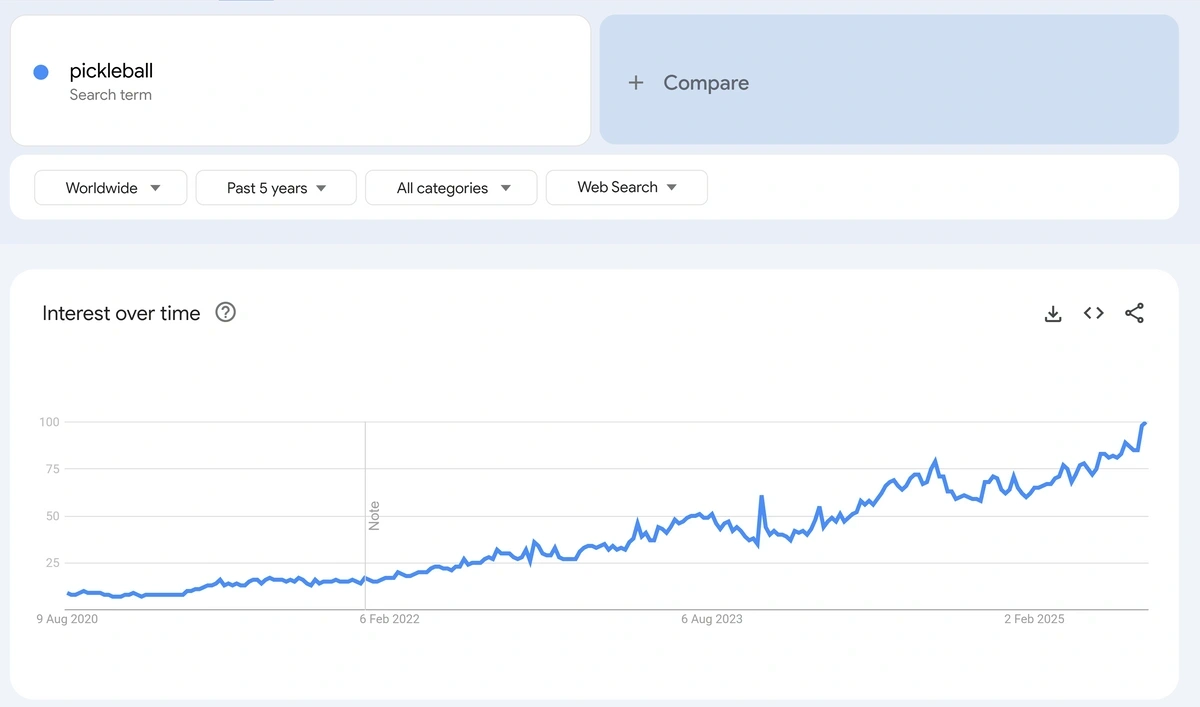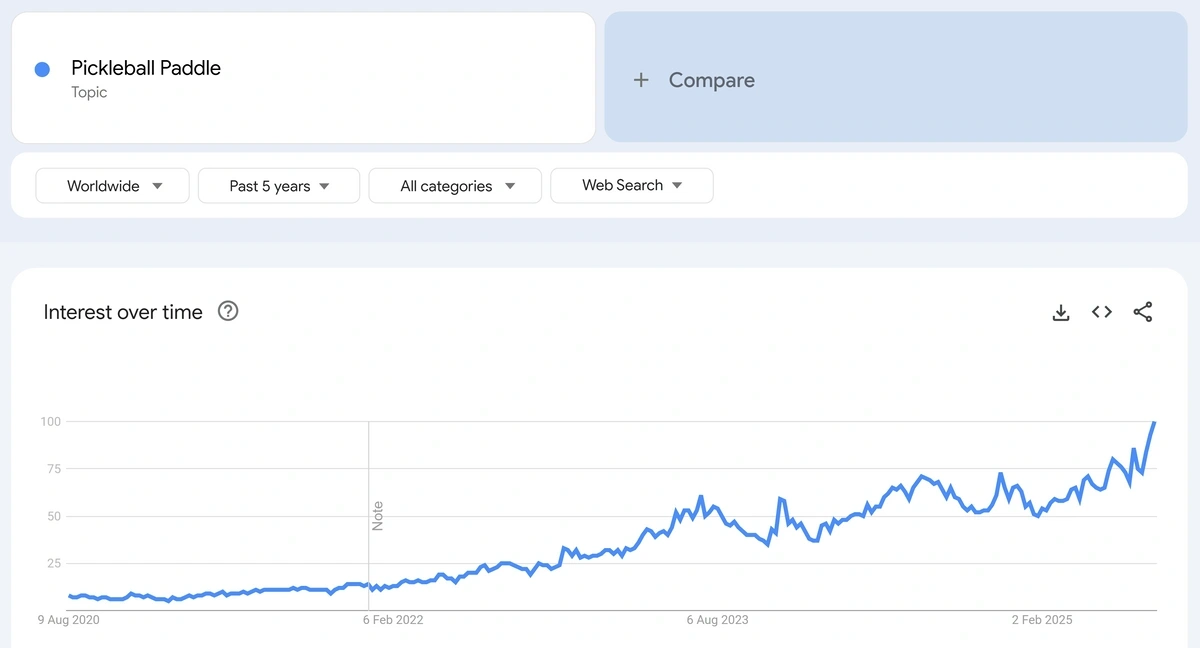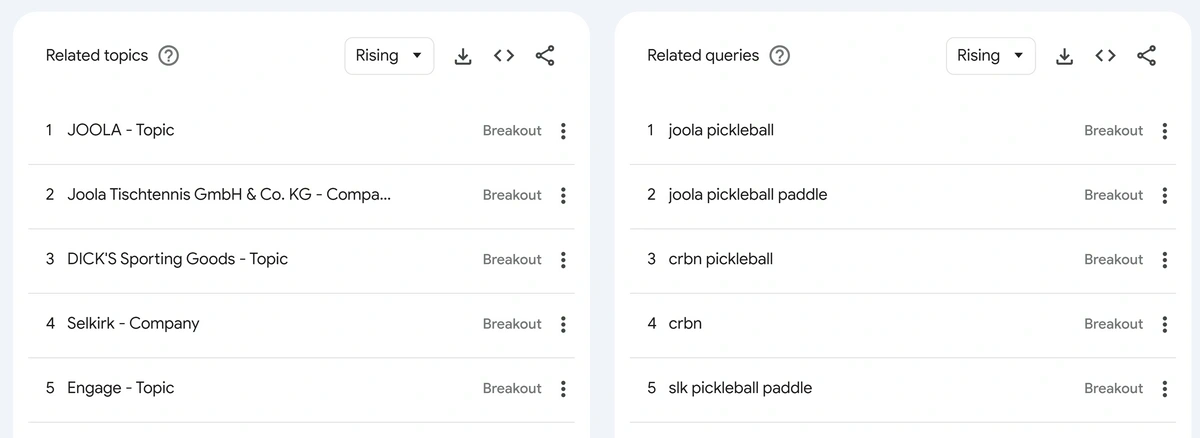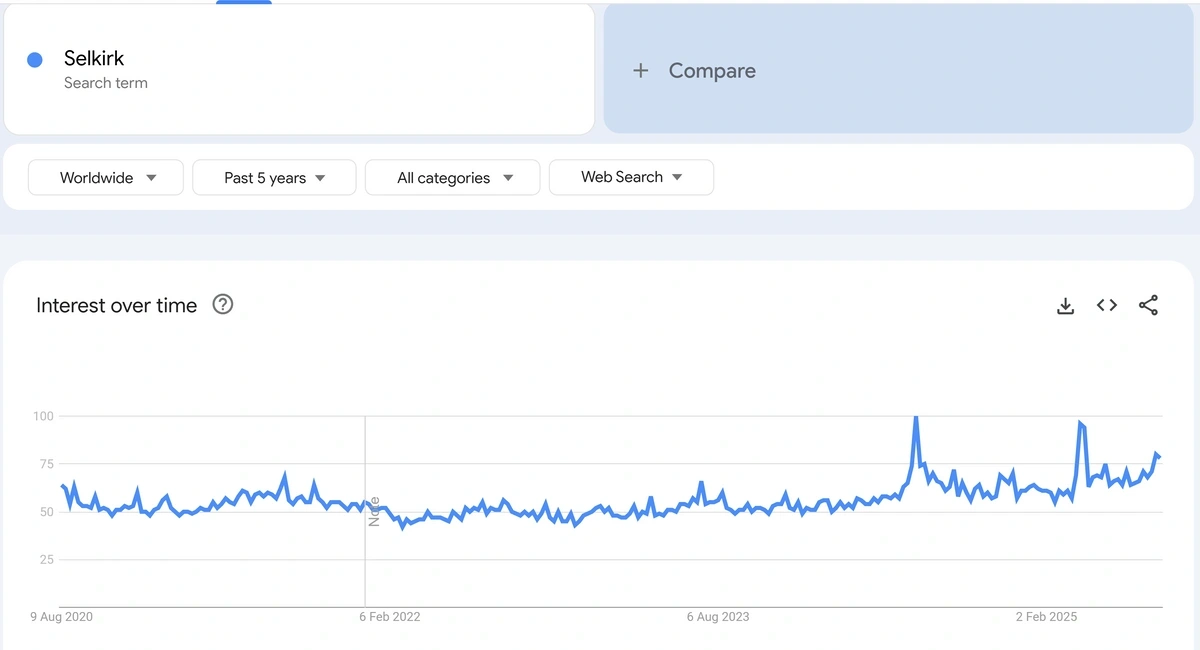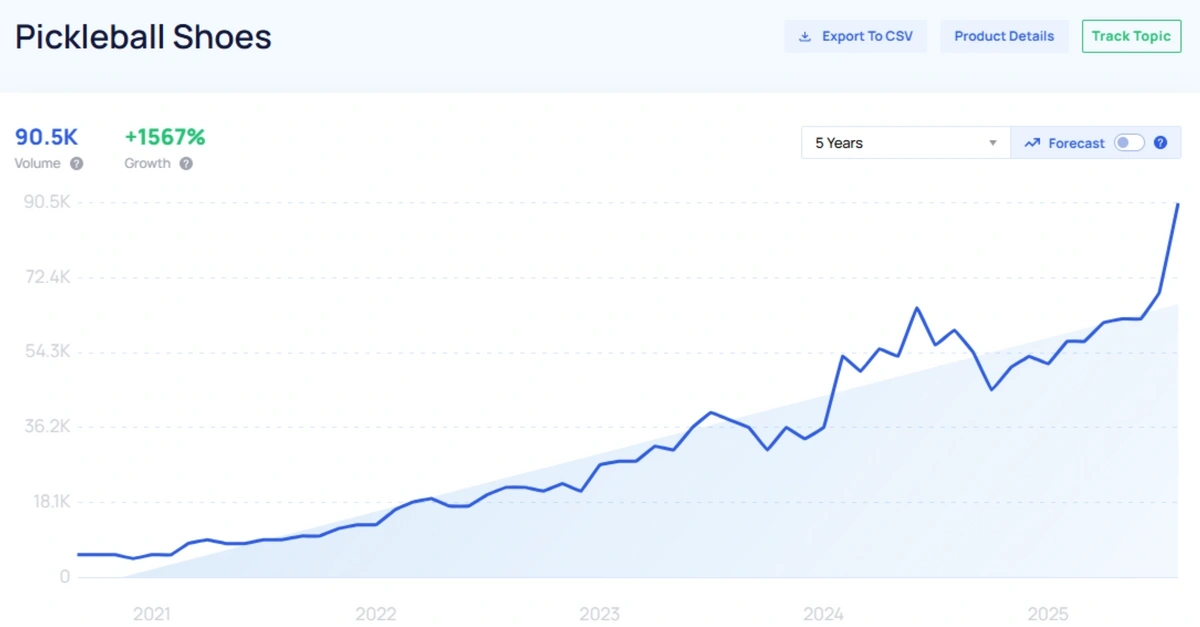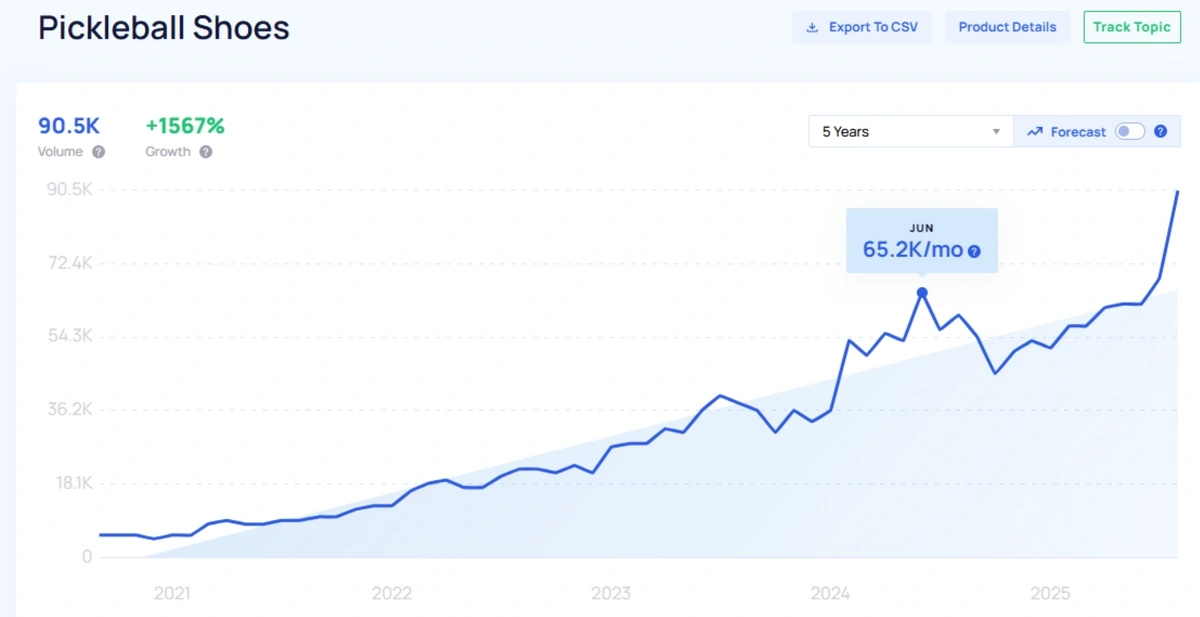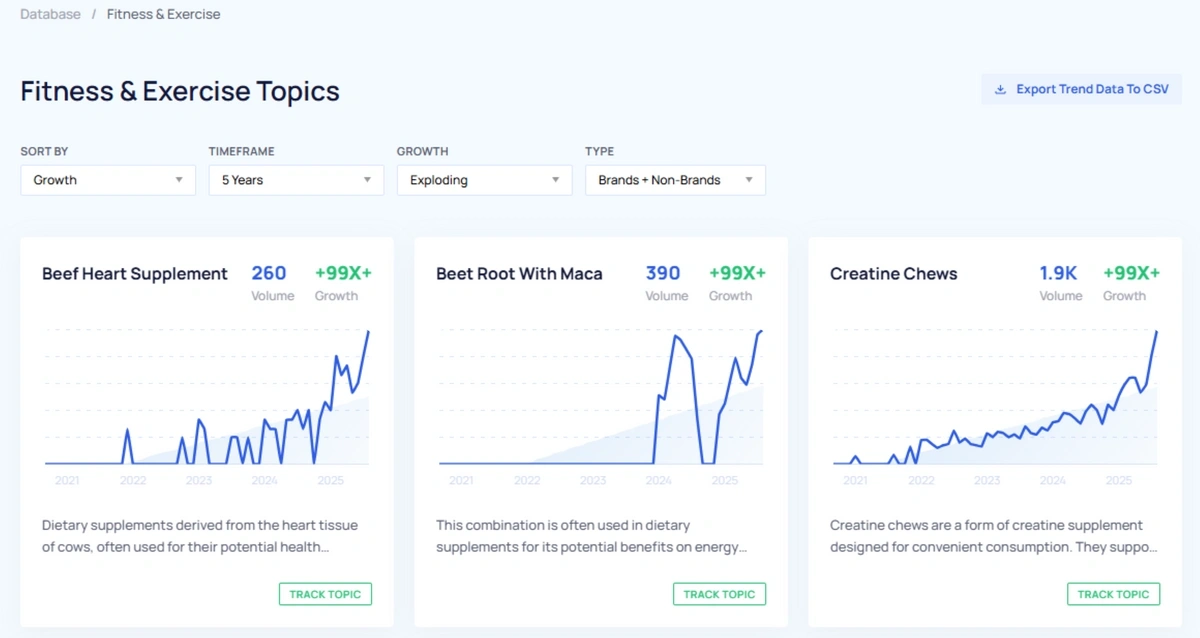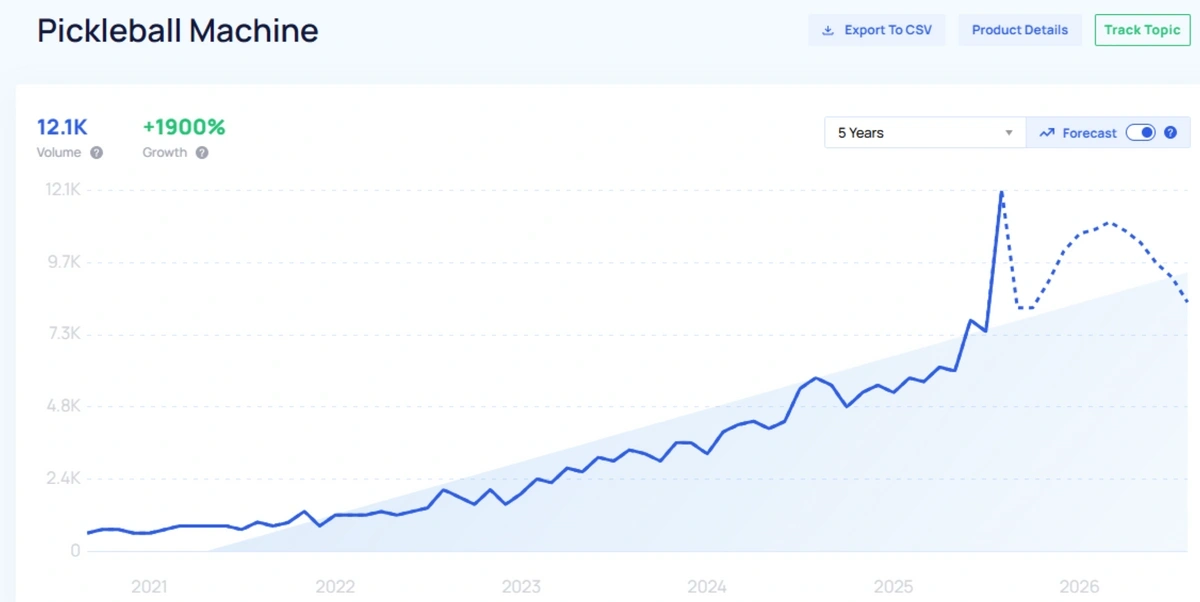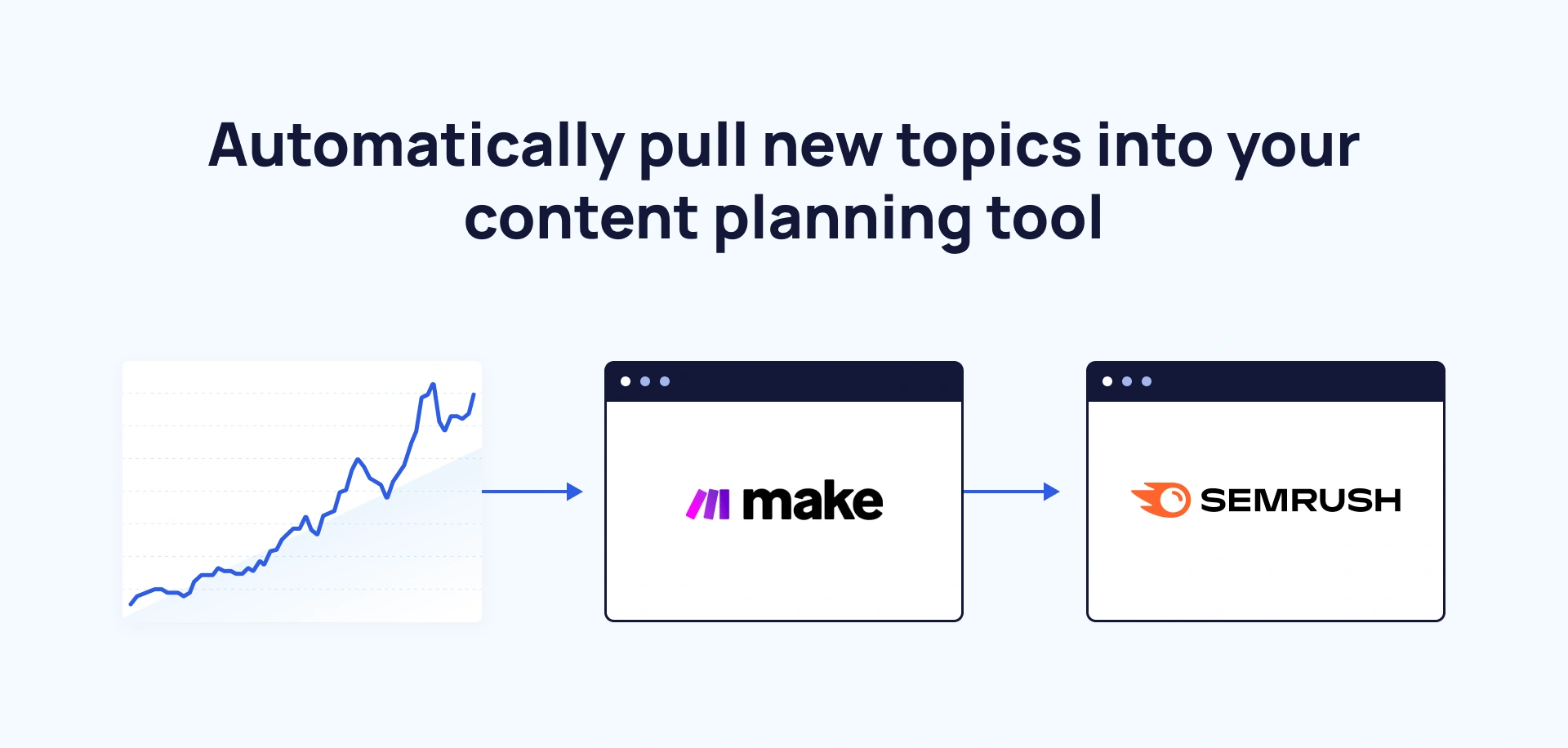
Google Trends Search Volume Explained
Google Trends is a great tool to find trending keywords.
But getting actual search volume data from the platform is impossible.
If you need exact search volume numbers to inform your business decisions, you'll need a tool that enhances the data that you get from Google Trends.
Keep reading to see exactly which types of data you can pull from Google Trends and where you can find reliable search volume data.
How to See Search Volume in Google Trends
After you enter a keyword in Google Trends, you’ll see an “interest over time” graph.
Google Trends data for the keyword “pickleball.”
The date range runs along the X axis and the Y axis shows numbers from 0 to 100 to indicate search interest.
These numbers are a measure of search volume, but this is relative search volume instead of absolute search volume.
What Does the Relative Search Volume Index Mean in Google Trends?
Google Trends doesn’t show actual search volume numbers. Instead, they’re providing a relative scale.
A measurement of 0 means no interest and 100 means max popularity.
For example, a measure of 25 would mean the term had one-quarter of the search volume on that date compared to its peak popularity.
These charts can be helpful for glancing at keywords or comparing interest over time. But they don’t provide exact search volume data.
For example, a Google Trends search for “pickleball paddle” shows that the term grew in popularity in July and November of 2024, before a sustained rise to record levels in 2025. According to Google’s relative search volume, the keyword went from "37" last January to "72" in July.
But the actual search volume remains a mystery.
Google Trends search volume data for “pickleball paddle.”
The term could’ve had 100 searches at its peak or it could’ve had 10,000 searches. That’s a huge difference. Unfortunately, with Google Trends, you don’t have access to that sort of absolute search volume data.
What Does "Breakout" Mean in Google Trends?
Another search volume measurement provided by Google Trends is what’s referred to as “breakout” queries and topics.
Google Trends provides “breakout” keywords and topics for pickleball.
These “breakout” topics and keywords have recently experienced a large increase in search volume, more than 5,000%. But again, this isn’t specific search volume data. It’s simply a relative measurement.
Take one “breakout” example from above: Selkirk (a brand of pickleball equipment).
Looking at that keyword in Google Trends, you see that search volume is climbing, hitting an all-time high last July before coming close to its peak again in April 2025. What you don’t know are the actual numbers behind that relative scale. Are there 200 searches for this keyword or are there 2,000 searches?
Google Trends data for “Selkirk”.
How to Get Absolute Search Volume Using Exploding Topics
Unlike Google Trends, Exploding Topics gives you real search volume numbers. This is actual data that can guide your decision-making and give you insight into the keywords that are most important.
Simply search for a keyword in Exploding Topics, and you’ll be brought to a chart that shows a date range and actual search volume data.
For example, let’s follow the pickleball theme and look at a chart from Exploding Topics.
Exploding Topics data for “pickleball shoes” shows absolute search volume.
This chart shows the absolute search volume for the keyword for the previous month: 90.5k.
If you hover your cursor over the chart, you can pick any month and see the search volume. For example, in June 2024, search volume was 65.2k per month.
Search volume data over time.
Exploding Topics also has a way to call out keywords that are growing significantly. They’re labeled as “exploding.”
And this is an intelligent label. These keywords have actually been vetted by a human to make sure they’re actual trends and not just flash-in-the-pan fads.
In the Exploding Topics Pro database, you can use a simple drop-down menu to find all of the “exploding” keywords in a category.
The Exploding Topics Pro database makes it easy to find “exploding” topics.
Get More Search Traffic
Use trending keywords to create content your audience craves.
How to Forecast Future Search Volume with Exploding Topics
Another advantage of Exploding Topics over Google Trends is that it allows you to forecast trends data over the next 12 months.
It's all well and good knowing that search volume for a particular topic has grown over the last 1, 2, or 5 years. But what you really want to know is whether interest will continue to grow — that's what determines whether it is a trend worth jumping on or not.
Google Trends charts stop at the present day. But with Exploding Topics, you can toggle a 12-month forecast on and off.
Our machine learning model is based on millions of historical trend data points. That allows us to forecast how a trend will fare in future:
Exploding Topics search growth data and forecast for "pickleball machine".
In this case, we can see that "pickleball machine" has enjoyed some steep growth recently, hitting an all-time high in August 2025. But our forecast suggests it may not be the absolute optimum trend to chase.
That's not to say it's a complete non-starter. Even in forecast mode, Exploding Topics provides absolute rather than relative data, so we can see that pickleball machines are still expected to attract 8.3k searches per month by August 2026.
But where Google Trends would leave you guessing, our unique algorithm gives you a pretty shrewd idea of what may be around the corner, allowing you to make more informed judgements about which trends to pursue.
Does the Google Trends API Provide Absolute Search Volumes?
Google Trends recently launched an API. While this has its uses, search volume still works in exactly the same way — a relative 0-100 scale, not absolute data.
Fortunately, if you need a trends API which gives you raw search volumes, Exploding Topics also has an API.
The Exploding Topics API enables you to send trending product notifications to apps like Slack, create automations to allow you to hop on trends seamlessly, or even keep blog posts fresh with relevant and up-to-the-minute trends data.
And again, unlike Google, the topics surfaced are forward-facing, with a laser focus on finding trends before they take off.
The Exploding Topics API is available as an add-on for users with the Exploding Topics Pro Business plan, which starts at $249 per month.
There are three add-on tiers to choose from, based on your usage.
|
Requests Per Month |
API Pricing |
|
1,000 |
$1,000 |
|
5,000 |
$2,000 |
|
25,000 |
$4,000 |
Conclusion
Finding the best keywords for your niche can be tricky.
Utilizing a tool like Google Trends can give you insight into a keyword’s general performance over time, but it won’t give you the actual search volume data you need.
In order to find the keywords that are most likely to make an impact, you need to have access to the absolute search volume data.
Exploding Topics offers vetted keyword trends and absolute search volume data so you can make smart decisions.
Stop Guessing, Start Growing 🚀
Use real-time topic data to create content that resonates and brings results.
Exploding Topics is owned by Semrush. Our mission is to provide accurate data and expert insights on emerging trends. Unless otherwise noted, this page’s content was written by either an employee or a paid contractor of Semrush Inc.
Share
Newsletter Signup
By clicking “Subscribe” you agree to Semrush Privacy Policy and consent to Semrush using your contact data for newsletter purposes
Written By


Alison is an accomplished copywriter with proven success in editing, marketing, research, and management. Before writing for E... Read more

